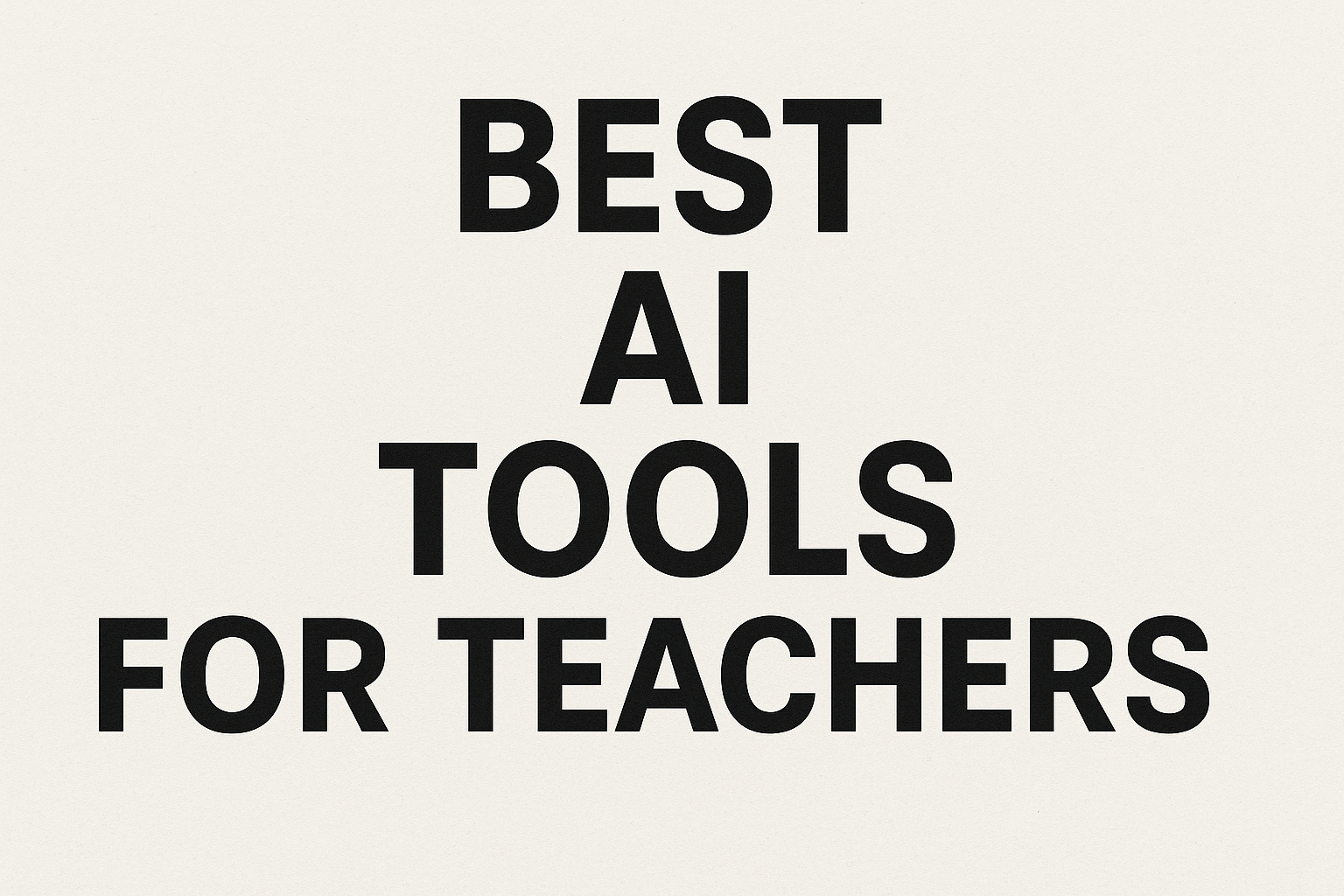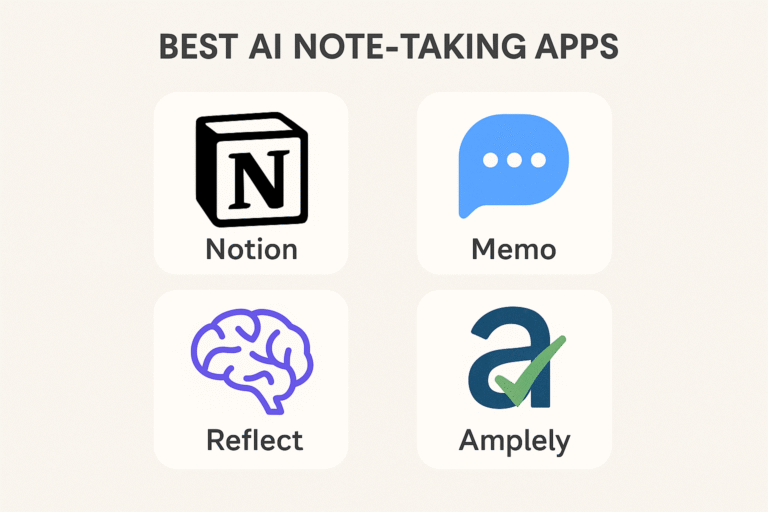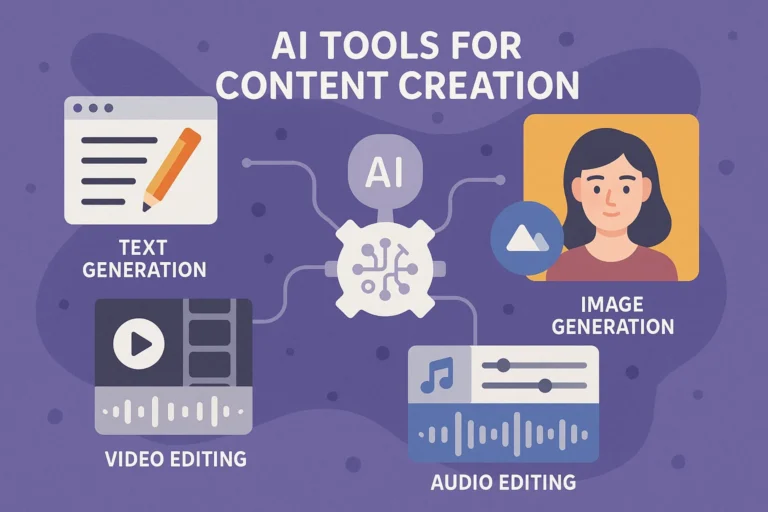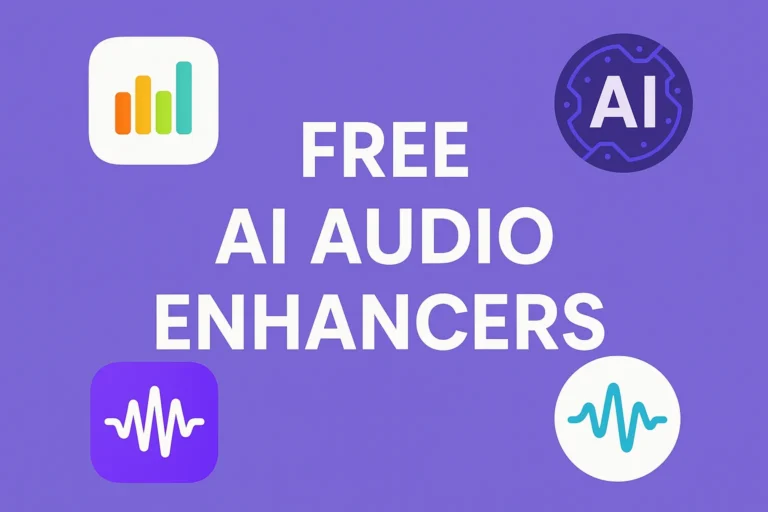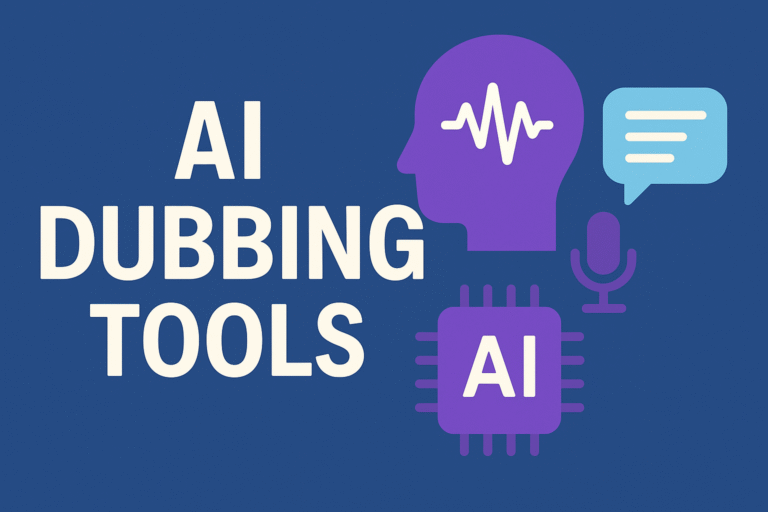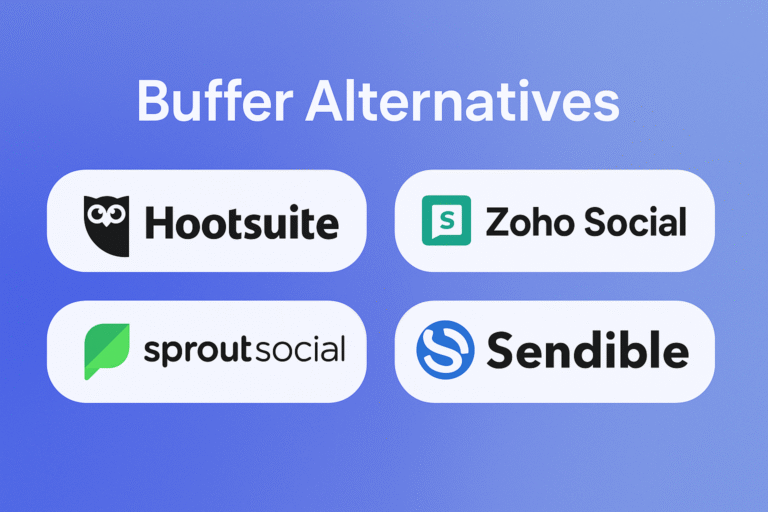Teaching in 2025 feels like trying to conduct an orchestra while juggling – managing diverse learning styles, creating engaging content, providing personalized feedback, tracking student progress, and somehow finding time for actual instruction. If you’re spending more time on administrative tasks than teaching, you’re experiencing the same challenge facing 87% of educators worldwide.
Here’s the transformation opportunity: artificial intelligence has evolved to handle the time-consuming aspects of teaching while amplifying your ability to create meaningful learning experiences. The right AI tools don’t just save time – they can revolutionize student engagement, improve learning outcomes, and restore your passion for education by eliminating repetitive tasks that drain your energy.
After testing over 100 AI tools specifically designed for educational applications and implementing them across different teaching contexts, I’ve identified the platforms that actually transform teaching effectiveness. This isn’t just another tool list – it’s your strategic roadmap to leveraging AI for educational excellence and professional fulfillment.
Why Traditional Teaching Methods Are Failing in the Digital Age
Modern students learn differently than previous generations, yet most educational approaches remain rooted in pre-digital methodologies. This mismatch creates engagement challenges, learning outcome gaps, and teacher burnout that compounds over time.
The Modern Teaching Challenge
Diverse Learning Styles: Today’s classrooms contain students with dramatically different learning preferences, attention spans, and technological comfort levels. Traditional one-size-fits-all approaches leave significant numbers of students behind.
Content Creation Demands: Teachers are expected to create engaging, multimedia educational content while managing full teaching loads, grading responsibilities, and administrative requirements. This expectation is simply unsustainable without technological assistance.
Personalization Expectations: Students and parents increasingly expect personalized learning experiences that adapt to individual needs, progress rates, and interests. Delivering this personalization manually is impossible at scale.
Administrative Overwhelm: Teachers spend 60% of their time on non-teaching activities – grading, lesson planning, administrative reporting, and parent communication. This ratio prevents focus on actual instruction and student relationship building.
Technology Integration Pressure: Educational institutions demand technology integration while providing minimal support for implementation, leaving teachers to figure out complex tools while maintaining full teaching responsibilities.
The 30 Best AI Tools for Teachers: Comprehensive Analysis by Educational Function
Lesson Planning and Content Creation Powerhouses
1. Magic School AI: The Complete Teaching Assistant
Magic School AI offers the most comprehensive suite of AI tools specifically designed for educators, with 60+ specialized applications that address virtually every aspect of teaching workflow.
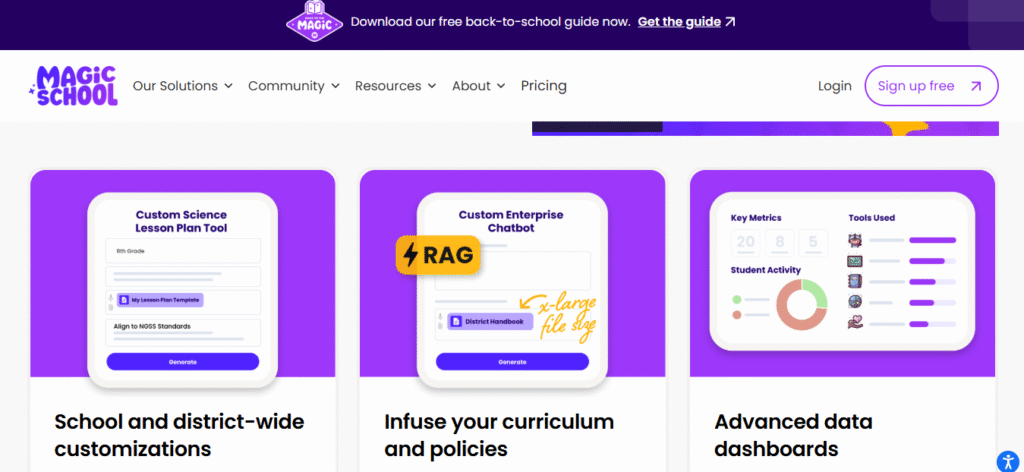
The platform’s lesson plan generator creates detailed, standards-aligned educational content that adapts to different grade levels, learning objectives, and time constraints. Unlike generic AI tools, Magic School understands pedagogical principles and educational best practices.
The worksheet generator produces customized activities, assessments, and homework assignments with automatic answer key generation. This feature alone can save teachers 5-10 hours per week while ensuring activity quality and educational alignment.
Magic School’s email and communication tools help teachers craft professional messages to parents, administrators, and colleagues, ensuring clear communication while saving time on routine correspondence.
Strategic Advantage: Magic School’s education-specific design means every feature is optimized for teaching applications rather than adapted from generic business tools.
2. TeachFX: The Classroom Analytics Platform
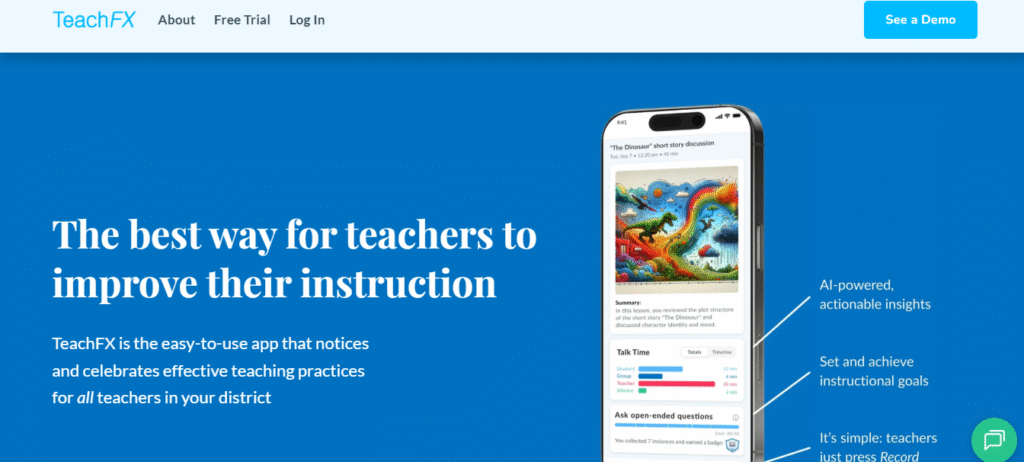
TeachFX uses AI to analyze classroom audio and provide insights into teaching effectiveness, student participation patterns, and instructional quality. This objective feedback helps teachers optimize their instruction methods.
The platform identifies student talk time, teacher questioning techniques, and discussion patterns that correlate with improved learning outcomes. This data-driven approach to teaching improvement is revolutionary for professional development.
TeachFX’s privacy-focused design ensures student data protection while providing actionable insights that help teachers refine their instructional approaches.
3. Gradescope: The AI-Powered Assessment Solution
Gradescope’s AI streamlines grading processes for everything from multiple-choice tests to complex written assignments, dramatically reducing grading time while maintaining assessment quality.
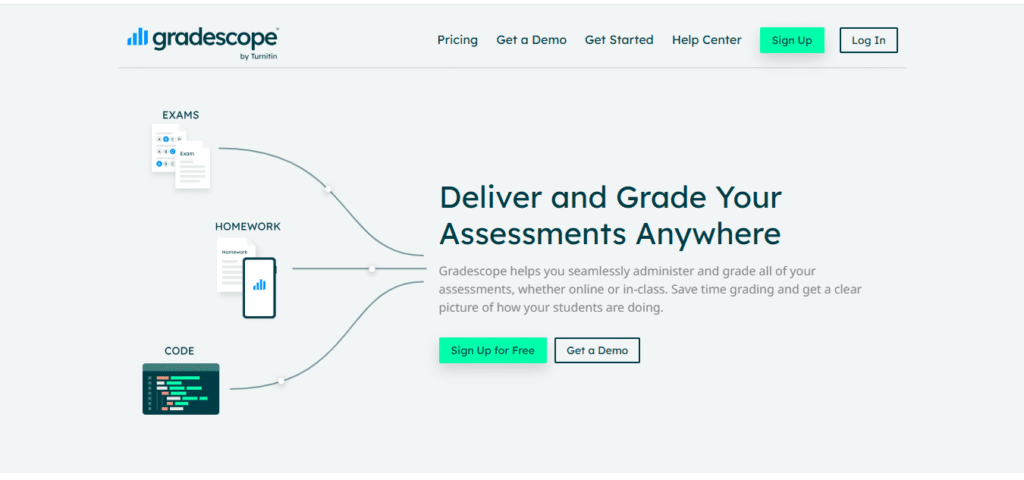
The platform’s AI can recognize handwriting, mathematical equations, and diagram elements, enabling automated grading of traditionally manual assessment types.
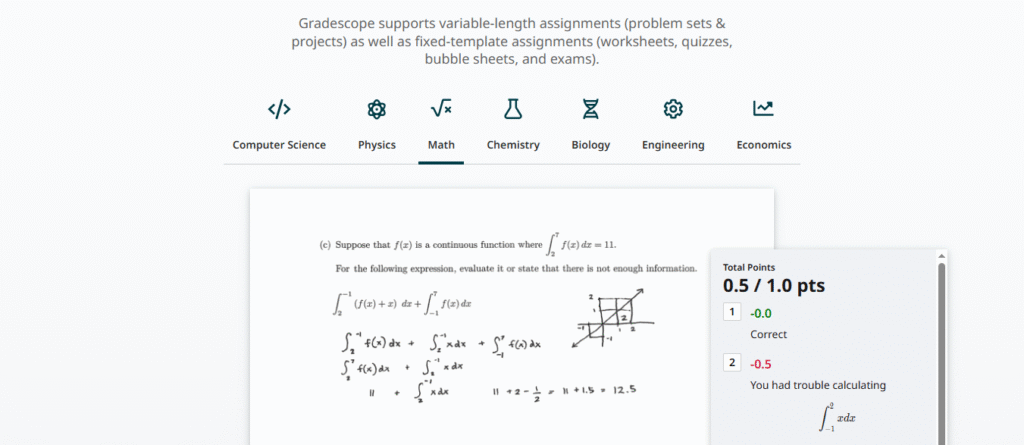
Gradescope’s analytics identify common student mistakes and knowledge gaps, helping teachers adjust instruction to address widespread learning challenges.
Content Creation and Curriculum Development
4. Coursebox: The AI Course Builder
Coursebox transforms any content – documents, videos, websites – into structured educational courses with quizzes, assignments, and learning assessments automatically generated through AI analysis.
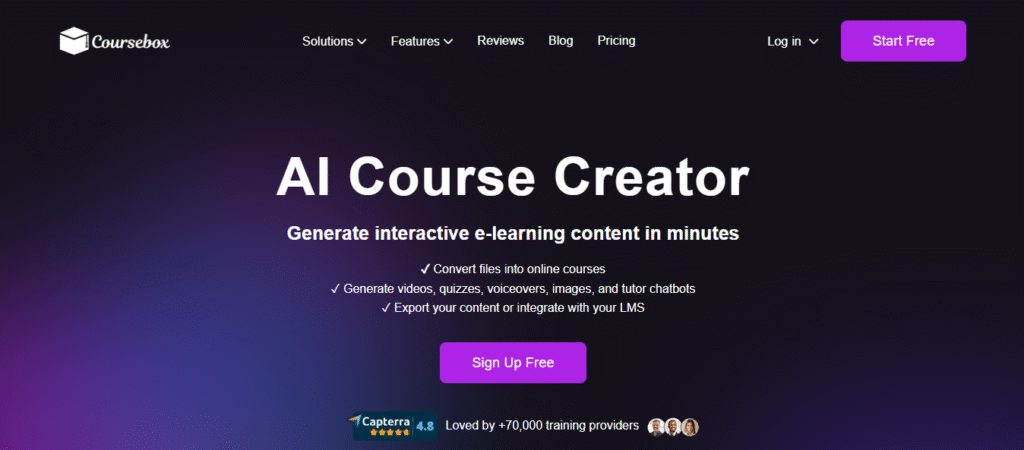
The platform creates learning objectives, designs assessment rubrics, and develops multimedia educational experiences from source materials, dramatically reducing course development time.
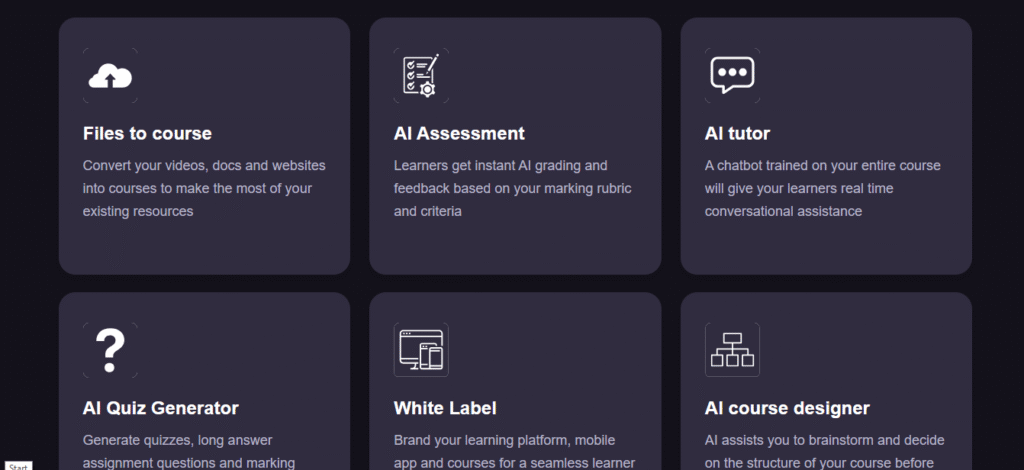
Coursebox’s adaptive learning features adjust content difficulty and pacing based on individual student performance, creating personalized learning experiences at scale.
5. Eduaide.Ai: The Comprehensive Teaching Resource Generator
Eduaide.Ai specializes in creating educational resources tailored to specific curriculum standards and learning objectives. The platform generates lesson plans, activities, and assessments that align with educational frameworks.
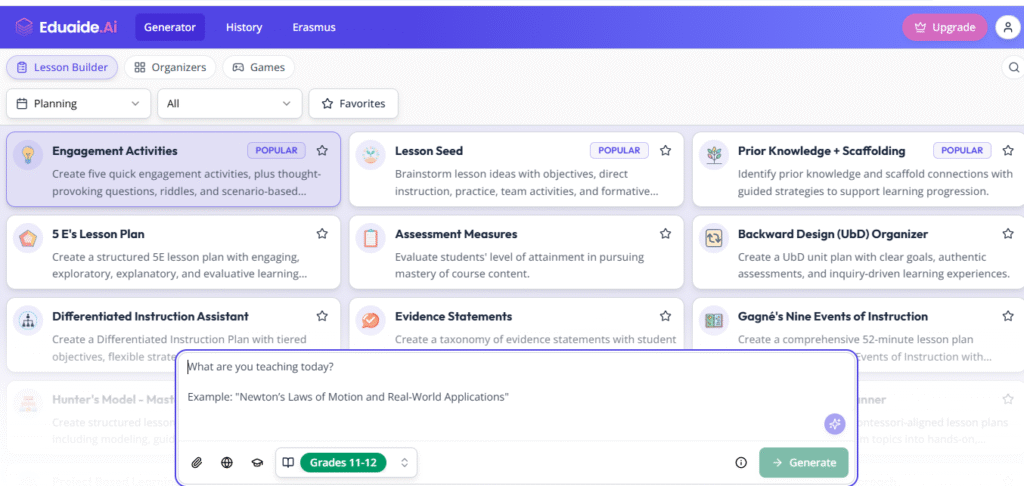
The tool’s differentiation features create content variations appropriate for different learning levels within the same classroom, addressing diverse student needs without requiring separate lesson planning.
Eduaide.Ai’s accessibility features ensure generated content meets diverse learning needs, including accommodations for students with disabilities or language barriers.
6. Curipod: The Interactive Lesson Creator
Curipod’s AI generates interactive lessons that combine traditional instruction with engaging digital activities, polls, and multimedia elements that maintain student attention.
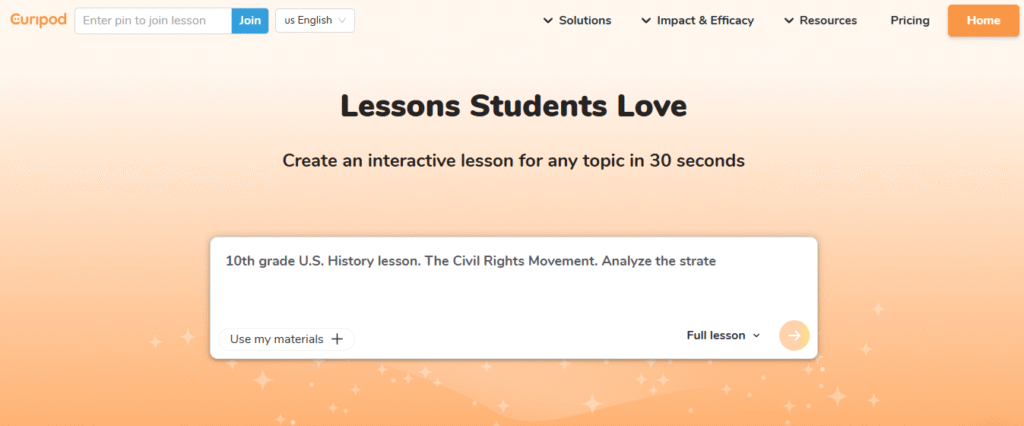
The platform’s real-time feedback features enable immediate assessment of student understanding, allowing teachers to adjust instruction pace and approach based on class comprehension levels.
Curipod’s collaborative features enable students to contribute to lesson content through polls, discussions, and creative activities that enhance engagement and ownership of learning.
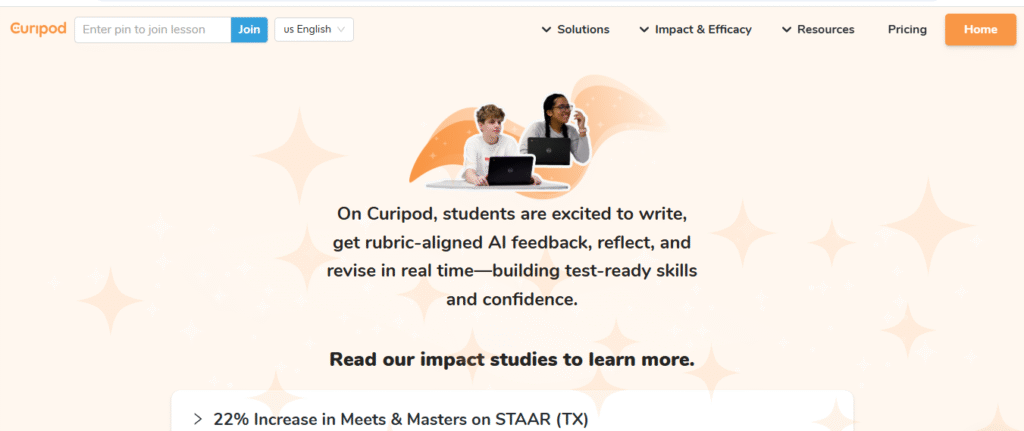
Grading and Assessment Automation
7. Gradescope: The Intelligent Grading Assistant
Gradescope’s AI recognizes patterns in student responses and can grade complex assignments including mathematical work, diagrams, and written responses with remarkable accuracy.
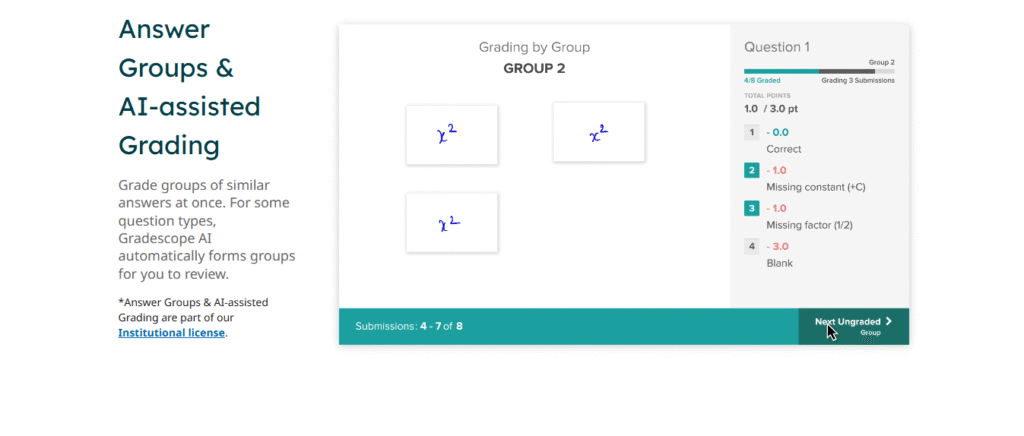
The platform’s rubric-based grading ensures consistency across all assignments while providing detailed feedback that helps students understand their mistakes and improvement areas.
Gradescope’s analytics identify learning trends across classes and semesters, helping teachers refine curriculum and instruction based on comprehensive performance data.
8. Turnitin: The Academic Integrity and Feedback Platform
Turnitin’s AI goes beyond plagiarism detection to provide sophisticated writing feedback that helps students improve their composition skills while ensuring academic integrity.
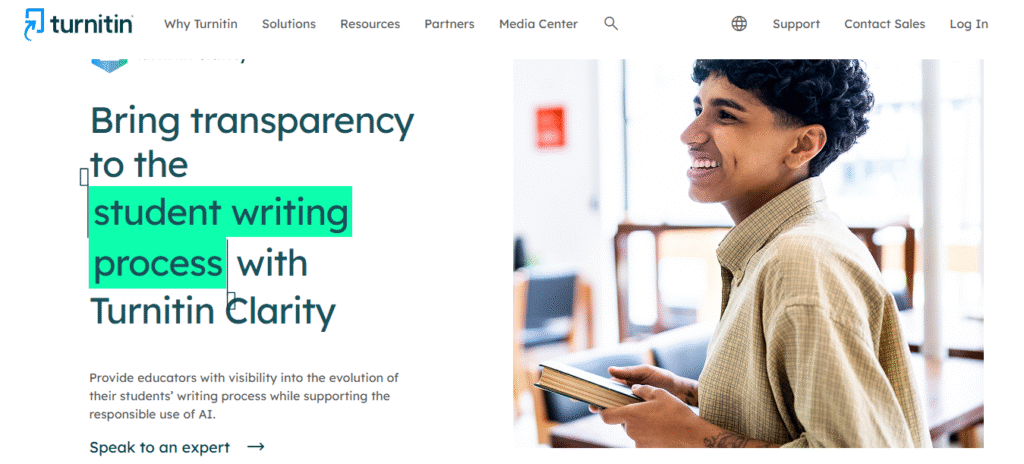
The platform’s originality checking uses advanced AI to identify potential plagiarism, inappropriate collaboration, and AI-generated content submissions.
Turnitin’s feedback features provide detailed writing suggestions that help students develop better writing skills while reducing teacher grading time.
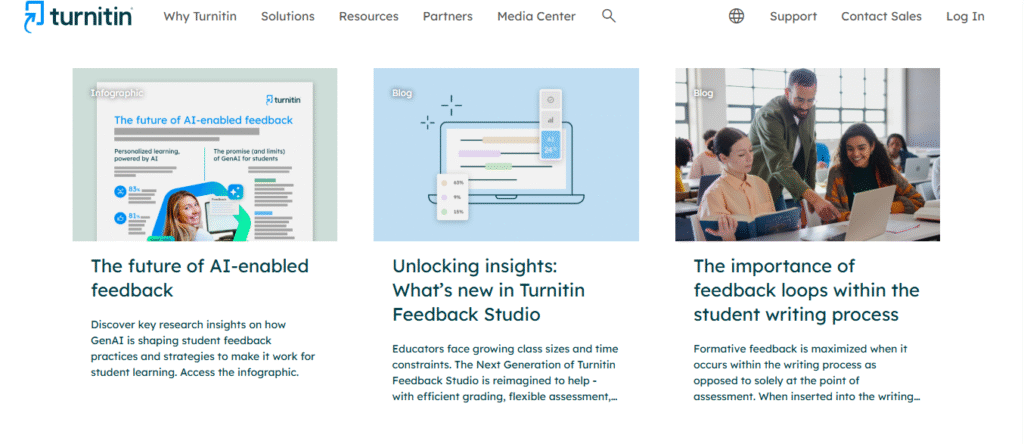
9. Crowdmark: The Collaborative Grading Solution
Crowdmark’s AI facilitates efficient grading of paper-based assessments through digital workflows that maintain the flexibility of traditional testing while adding technological efficiency.
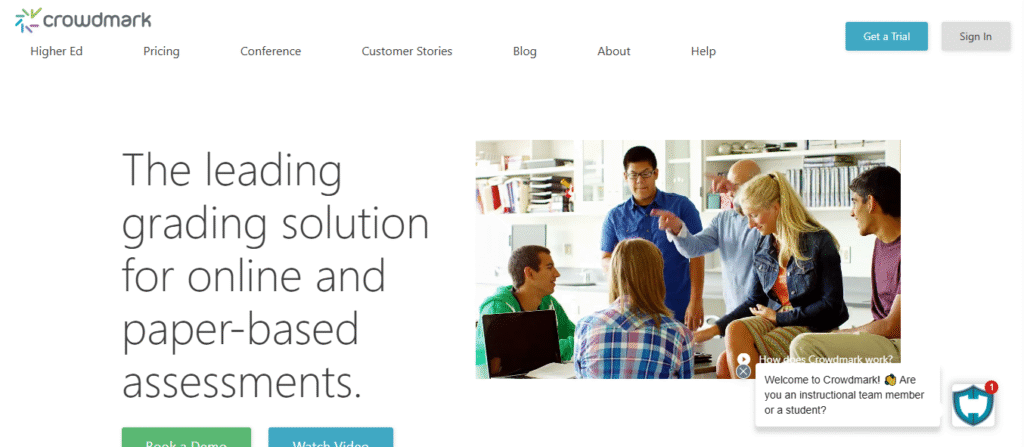
The platform enables multiple graders to collaborate on complex assessments while maintaining grading consistency and providing comprehensive student feedback.
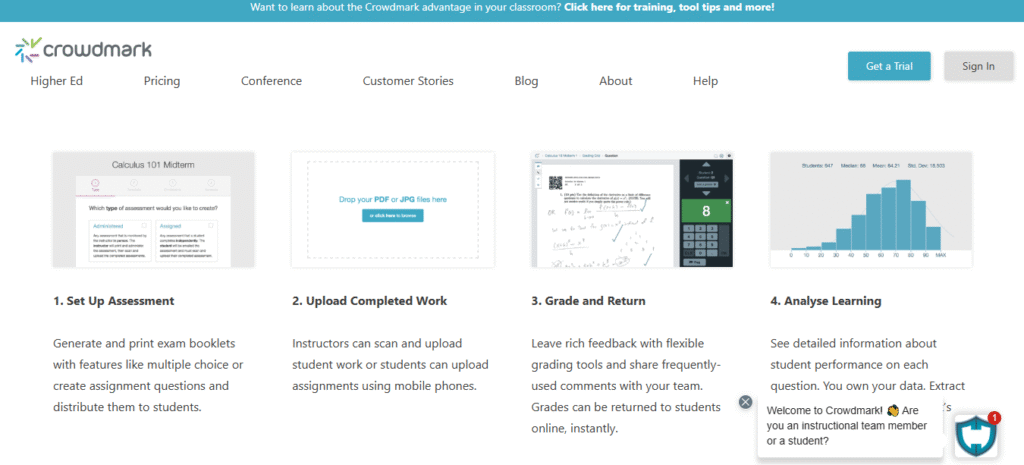
Crowdmark’s analytics provide insights into question effectiveness, student performance patterns, and assessment quality that inform curriculum improvement.
Student Engagement and Interactive Learning
10. Kahoot!: The Gamification Champion
Kahoot!’s AI features create engaging quiz games and interactive activities that transform traditional review sessions into entertaining learning experiences.
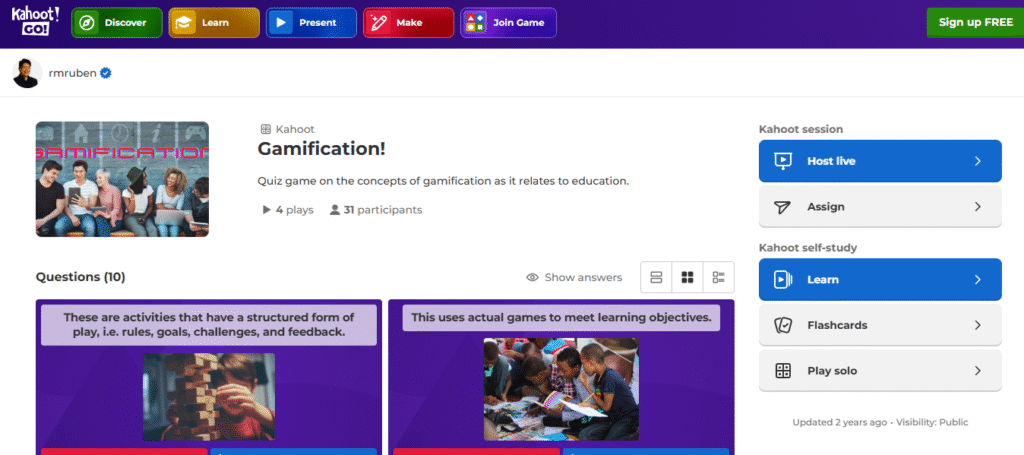
The platform’s question generation AI can create quiz content from lesson materials, textbooks, or learning objectives, dramatically reducing preparation time for review activities.
Kahoot!’s analytics provide insights into student understanding and engagement patterns that help teachers identify knowledge gaps and adjust instruction accordingly.
11. Nearpod: The Interactive Lesson Platform
Nearpod’s AI creates immersive learning experiences that combine traditional instruction with interactive elements, virtual field trips, and real-time student response collection.
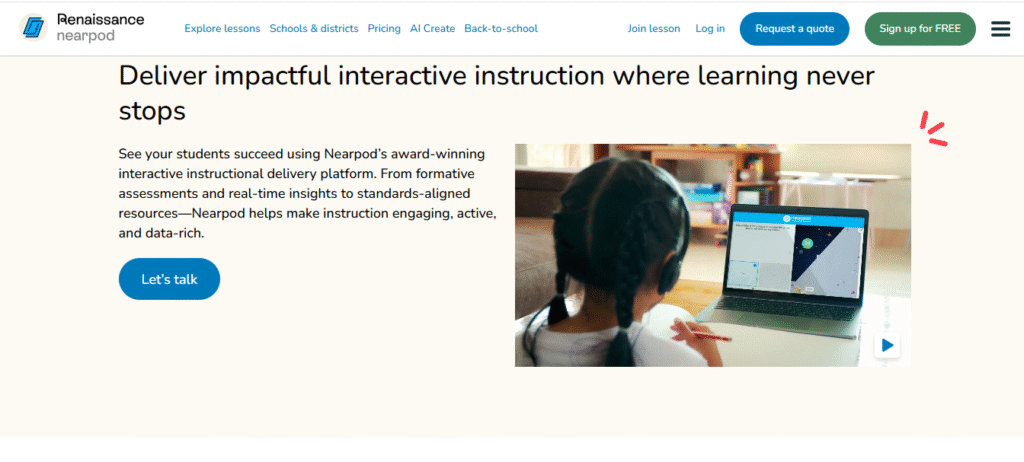
The platform’s content creation AI transforms lesson plans into engaging multimedia experiences that accommodate different learning styles and maintain student attention.
Nearpod’s real-time assessment features provide immediate insights into student understanding, enabling responsive teaching that addresses learning needs as they arise.
12. Flipgrid: The Video Discussion Platform
Flipgrid’s AI facilitates student video discussions and presentations, creating opportunities for authentic communication and creative expression within structured educational frameworks.
The platform’s transcription and analysis features help teachers efficiently review student video submissions and provide targeted feedback on communication skills.
Flipgrid’s community features enable cross-classroom collaboration and authentic audience experiences that motivate student participation and effort.
Research and Content Discovery
13. Elicit: The Research Assistant for Educators
Elicit’s AI helps teachers stay current with educational research, pedagogical developments, and subject matter advances that inform effective instruction.
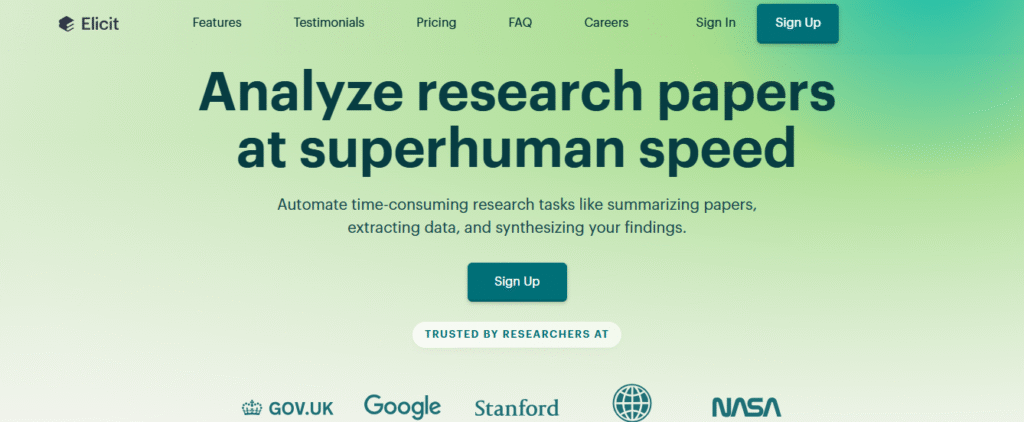
The platform analyzes research papers and extracts key findings relevant to teaching practice, helping educators implement evidence-based instruction without extensive research time investment.
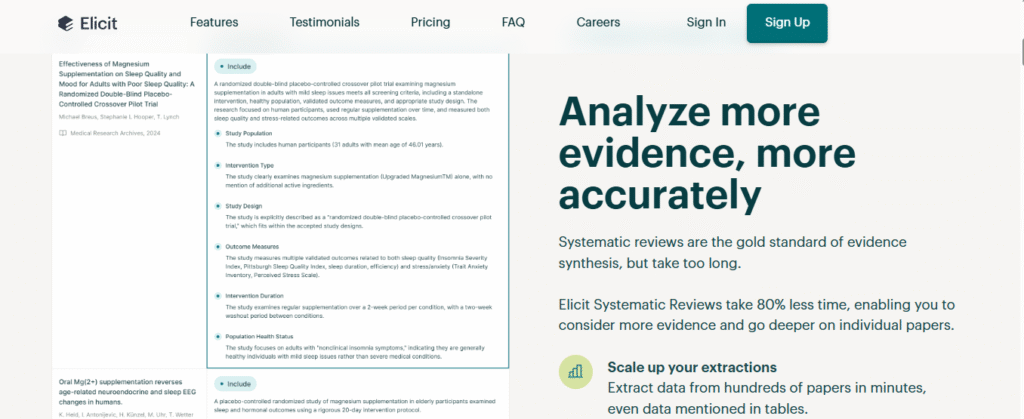
Elicit’s question-answering capabilities provide quick access to research-backed answers for curriculum and instruction questions.
14. Semantic Scholar: The Academic Search Engine
Semantic Scholar’s AI analyzes academic literature to provide relevant research findings, teaching strategies, and educational innovations that inform classroom practice.

The platform’s influence metrics help teachers identify the most impactful research in their subject areas, ensuring professional development time is invested in high-value learning.
15. ResearchRabbit: The Literature Discovery Tool
ResearchRabbit uses AI to identify relevant research connections and emerging trends in educational methodology and subject matter expertise.
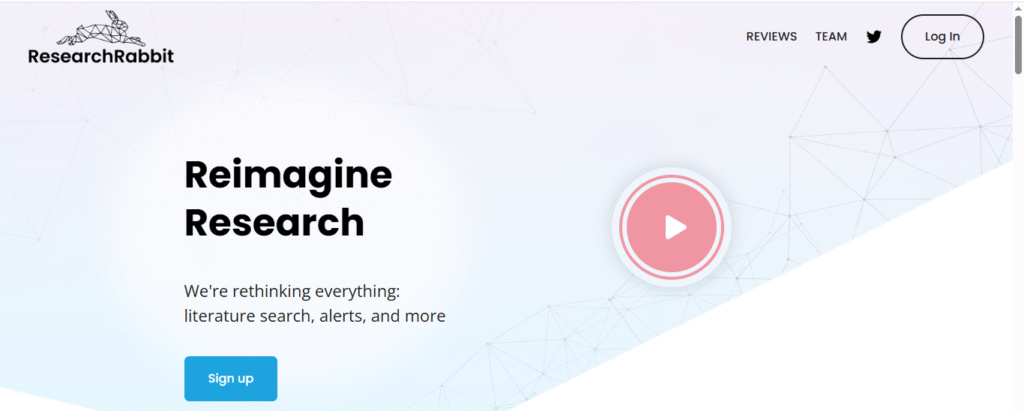
The platform helps teachers discover new teaching strategies, curriculum innovations, and pedagogical approaches that improve student learning outcomes.
Communication and Parent Engagement
16. Remind: The AI-Enhanced Communication Platform
Remind’s AI helps teachers craft effective communications with students and parents while maintaining appropriate boundaries and professional tone.
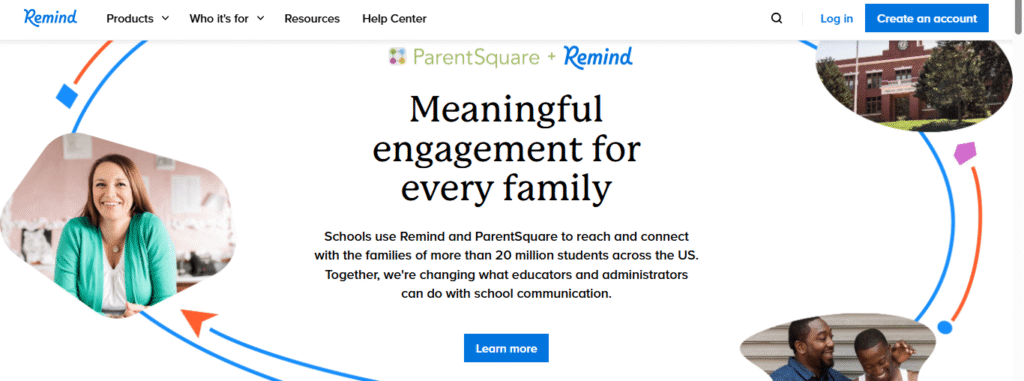
The platform’s translation features enable communication with non-English speaking families, expanding engagement opportunities and building inclusive classroom communities.
Remind’s scheduling and automation features ensure important communications reach recipients at optimal times while reducing teacher workload.
17. ClassDojo: The Classroom Community Builder
ClassDojo’s AI features facilitate positive classroom management and parent engagement through automated progress sharing and behavior tracking.
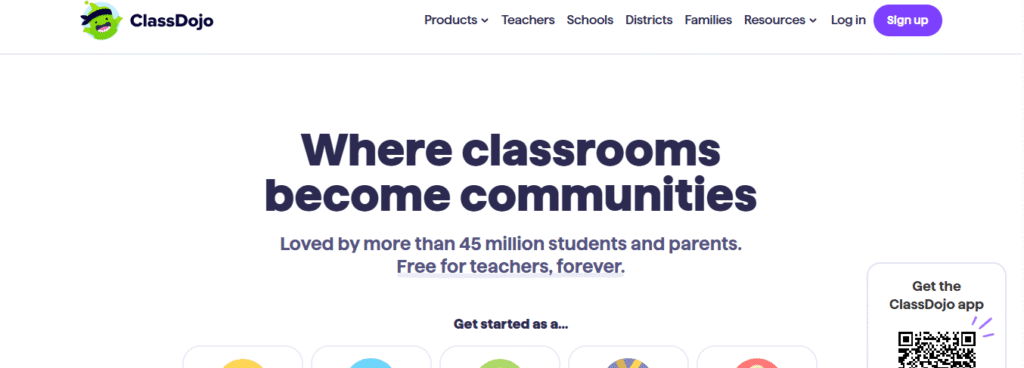
The platform’s story creation tools help teachers document and share student learning experiences with families, building stronger home-school connections.
ClassDojo’s insights help teachers identify effective classroom management strategies and student engagement approaches based on comprehensive behavioral data.
Professional Development and Skill Building
18. Coursera for Teaching: The Professional Learning Platform
Coursera’s AI recommends professional development opportunities based on teaching challenges, subject area needs, and career advancement goals.
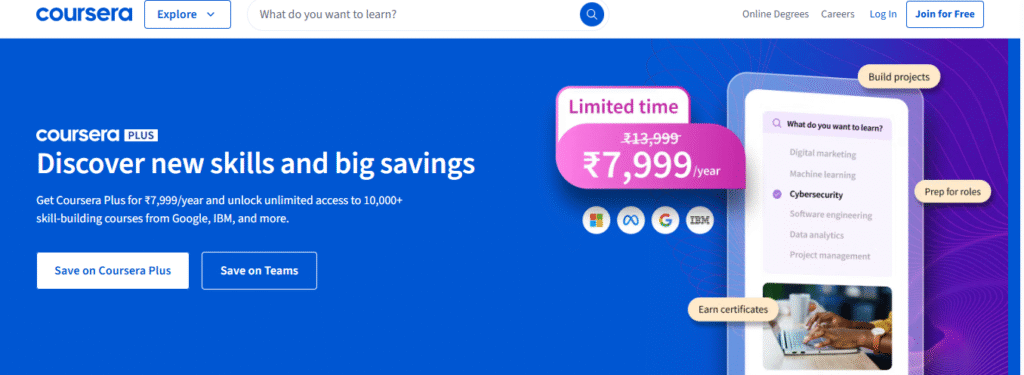
The platform’s skill assessment features help teachers identify areas for improvement and track progress in educational technology integration and pedagogical skill development.
19. EdApp: The Microlearning Platform
EdApp’s AI creates bite-sized professional development content that fits into busy teaching schedules while providing meaningful skill building opportunities.
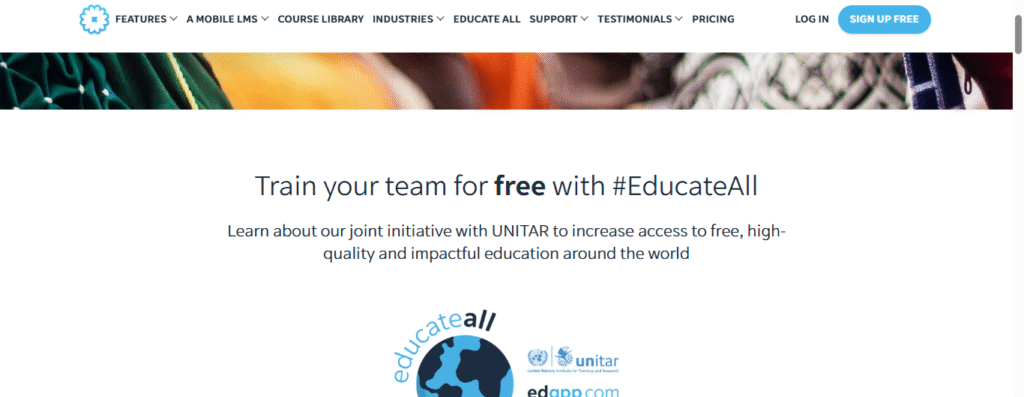
The platform’s adaptive learning adjusts content difficulty and pacing based on individual teacher needs and available time commitments.
Specialized Subject Area Tools
20. Photomath: The Mathematics Problem Solver
Photomath’s AI helps teachers provide step-by-step explanations for mathematical problems, enabling more effective math instruction and homework support.
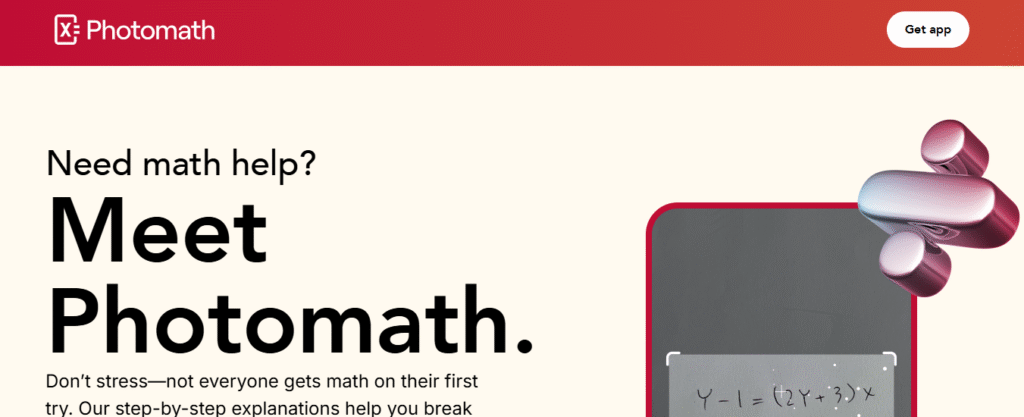
The platform’s problem recognition AI can analyze handwritten or printed mathematical expressions and provide detailed solution processes.
21. Grammarly for Education: The Writing Enhancement Tool
Grammarly’s educational features help teachers provide detailed writing feedback while helping students develop independent editing skills.
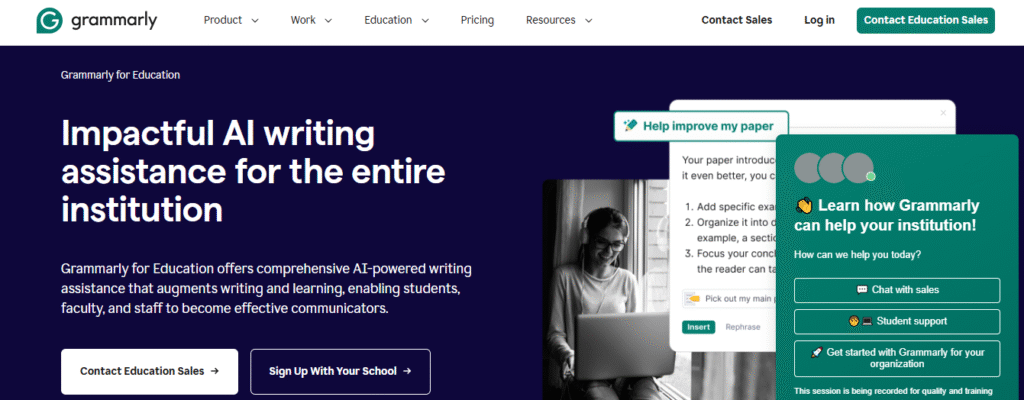
The platform’s plagiarism detection and writing suggestions support academic integrity while improving student writing quality.
22. Socratic by Google: The Homework Help Assistant
Socratic’s AI helps students understand homework problems through step-by-step explanations and relevant learning resources, reducing teacher workload while supporting student independence.
The platform covers multiple subject areas and provides explanations that help students develop problem-solving skills rather than just obtaining answers.
Creative and Multimedia Content Tools
23. Canva for Education: The Visual Content Creator
Canva’s educational features help teachers create professional-quality visual materials, presentations, and classroom decorations without graphic design expertise.
The platform’s template library includes educational-specific designs optimized for different grade levels and subject areas.
24. Adobe Creative Cloud for Education: The Multimedia Production Suite
Adobe’s educational tools enable teachers to create sophisticated multimedia content that engages students and enhances learning experiences.
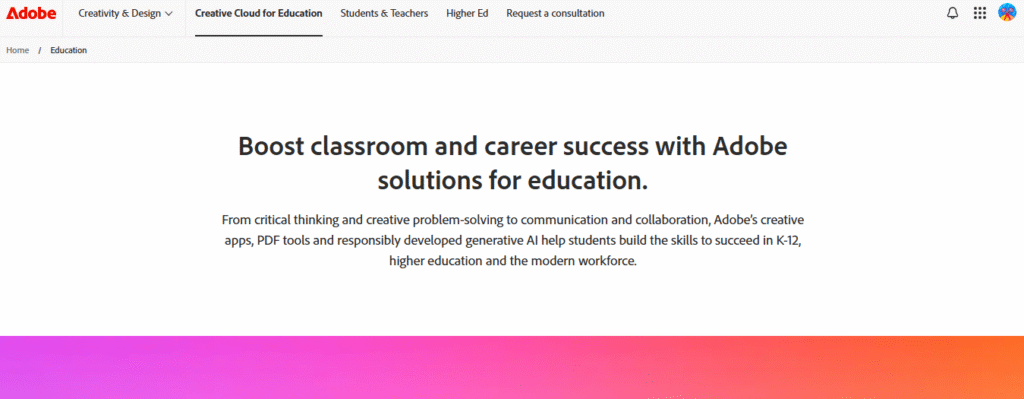
The platform’s AI features automate complex design tasks while maintaining professional quality standards.
25. Loom for Education: The Video Communication Tool
Loom’s AI helps teachers create instructional videos, provide personalized feedback, and maintain connection with students through asynchronous video communication.
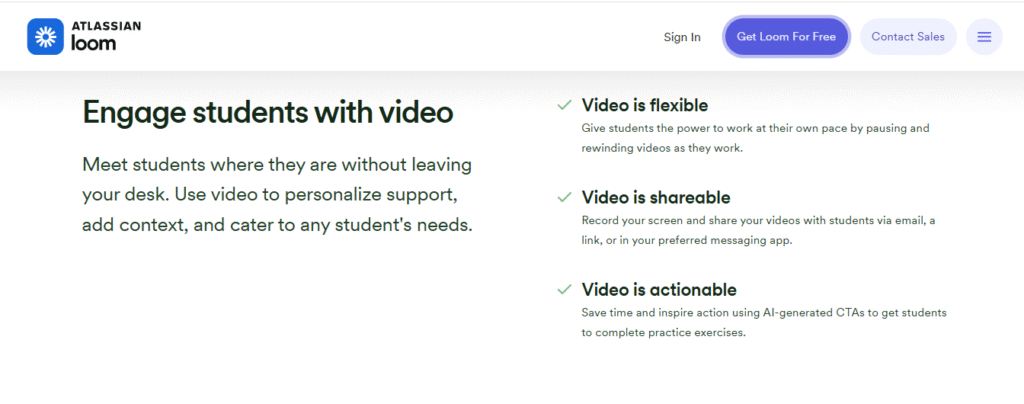
The platform’s transcription and accessibility features ensure video content reaches all students effectively.
Assessment and Analytics Platforms
26. Formative: The Real-Time Assessment Tool
Formative’s AI provides instant insights into student understanding through real-time assessment and feedback collection.
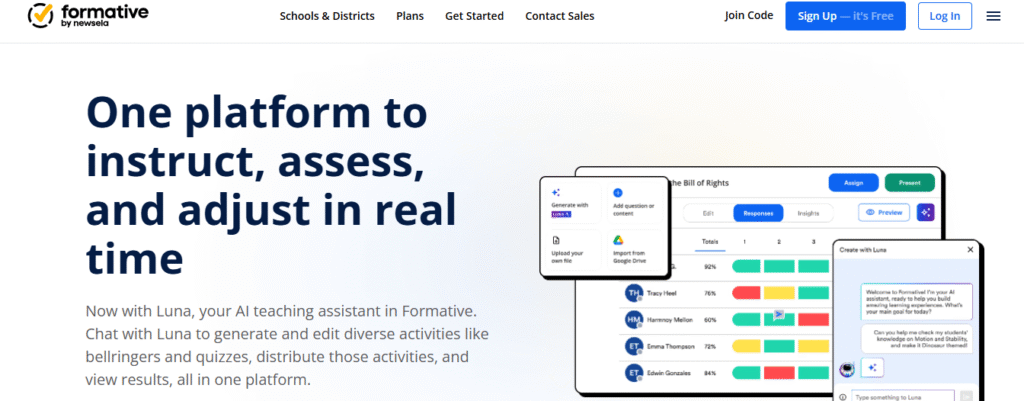
The platform helps teachers identify learning gaps immediately and adjust instruction to address student needs before misunderstandings compound.
27. Edulastic: The Standards-Aligned Assessment Platform
Edulastic’s AI creates assessments aligned with educational standards while providing detailed analytics on student performance and curriculum effectiveness.
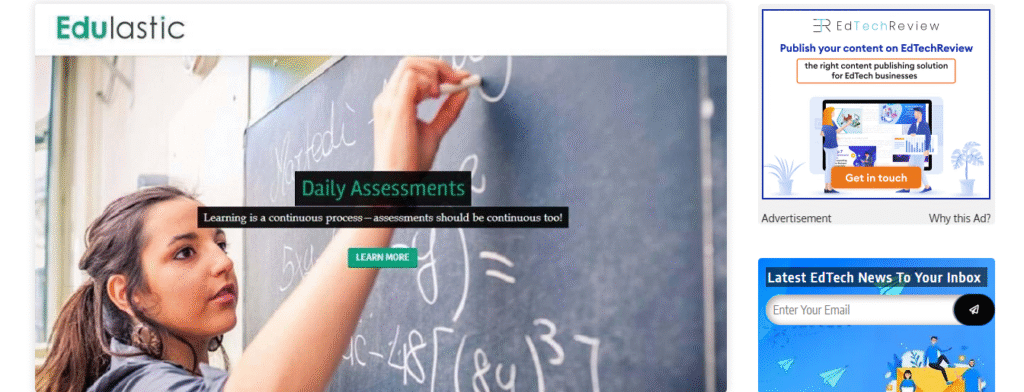
The platform’s item banking features enable teachers to build comprehensive assessment libraries that adapt to different learning objectives and student needs.
28. GoGuardian Teacher: The Digital Classroom Management Solution
GoGuardian’s AI helps teachers monitor student device usage and provide guidance for productive technology use during instruction.

The platform’s analytics provide insights into student digital engagement patterns that inform technology integration strategies.
Emerging Educational AI Technologies
29. ChatGPT for Education: The Conversational Learning Assistant
ChatGPT’s educational applications include tutoring support, content creation assistance, and personalized learning conversation that supplements traditional instruction.
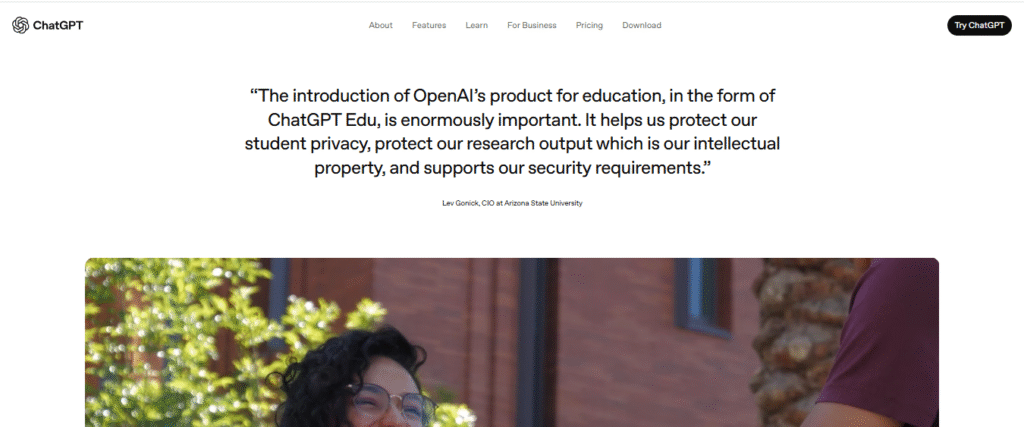
The platform’s adaptability makes it valuable for diverse educational applications across grade levels and subject areas.
30. Claude for Education: The Advanced Reasoning Assistant
Claude’s sophisticated reasoning capabilities make it valuable for complex educational applications including research assistance, critical thinking development, and advanced content analysis.

Strategic Implementation Framework for Educational AI Success
Implementing AI tools successfully in educational settings requires careful planning that addresses pedagogical goals, student needs, and institutional requirements.
Pedagogical Integration Strategy
Learning Objective Alignment: Ensure AI tools support specific learning objectives rather than replacing effective teaching practices with technology for technology’s sake.
Student-Centered Implementation: Choose AI applications that enhance student learning experiences rather than simply reducing teacher workload.
Assessment Integration: Implement AI tools that provide meaningful data about student learning progress and curriculum effectiveness.
Differentiation Support: Leverage AI capabilities to provide personalized learning experiences that address diverse student needs within classroom constraints.
Professional Development and Training
Gradual Skill Building: Implement AI tools progressively, allowing teachers to master basic applications before advancing to complex integrations.
Collaborative Learning: Encourage teacher collaboration and knowledge sharing about effective AI tool implementation and best practices.
Ongoing Support: Provide continuous professional development opportunities that help teachers optimize AI tool usage and stay current with educational technology developments.
Reflective Practice: Encourage teachers to critically evaluate AI tool effectiveness and make data-driven decisions about continued usage and optimization.
Building Educational Websites and Digital Learning Platforms
Modern education increasingly requires robust digital infrastructure that supports AI-enhanced teaching and learning experiences.
Learning Management System Integration
Educational institutions benefit from websites and platforms that seamlessly integrate with AI teaching tools:
Student Portal Optimization: Create user-friendly interfaces that allow students to access AI-enhanced learning materials, submit assignments, and receive personalized feedback.
Teacher Dashboard Design: Develop comprehensive dashboards that display AI-generated insights, student progress analytics, and curriculum effectiveness data in actionable formats.
Parent Communication Systems: Build platforms that automatically share AI-generated progress reports, learning updates, and engagement insights with families.
Assessment Integration: Design systems that accommodate AI-powered assessment tools while maintaining academic integrity and providing meaningful learning measurement.
For educational institutions that need professional website development to support their AI-enhanced teaching initiatives, experienced web developers can create learning platforms that maximize the educational impact of AI tools through proper technical architecture and user experience design.
Online Learning Platform Development
Course Delivery Optimization: Create platforms that effectively present AI-enhanced educational content across different devices and learning environments.
Interactive Feature Integration: Implement technologies that support AI-powered interactive learning experiences, real-time feedback, and collaborative activities.
Analytics and Reporting Systems: Develop comprehensive data collection and analysis capabilities that help educators understand and optimize AI tool effectiveness.
Accessibility Compliance: Ensure all AI-enhanced educational content meets accessibility standards and serves diverse learning needs effectively.
Subject-Specific AI Tool Applications
Different academic disciplines benefit from AI assistance in unique ways that address specific teaching challenges and learning objectives.
STEM Education Enhancement
Mathematics Instruction: AI tools can provide step-by-step problem solving, generate practice problems at appropriate difficulty levels, and offer personalized math tutoring that adapts to individual student needs.
Science Education: AI assists with experimental design, data analysis, scientific writing, and complex concept visualization that makes abstract ideas more accessible to students.
Technology Education: AI coding assistants help students learn programming concepts while providing teachers with tools to create engaging computer science curricula.
Engineering Applications: AI simulation and modeling tools enable hands-on engineering experiences that would be impossible with traditional classroom resources.
Humanities and Language Arts
Writing Instruction: AI writing assistants help students develop composition skills while providing teachers with tools to offer detailed, personalized feedback on student writing.
Literature Analysis: AI can facilitate deeper text analysis, identify literary themes and patterns, and generate discussion questions that promote critical thinking.
Language Learning: AI conversation partners provide language practice opportunities while helping teachers create immersive language learning experiences.
History Education: AI research tools help students access primary sources, analyze historical data, and develop evidence-based historical arguments.
Arts and Creative Education
Visual Arts: AI image generation and editing tools provide creative inspiration while teaching digital art skills that are increasingly relevant in modern careers.
Music Education: AI composition tools help students understand musical structure while providing teachers with resources for music theory instruction and creative projects.
Drama and Performance: AI script writing and character development tools support creative writing while helping students explore storytelling and performance techniques.
Special Education and Accessibility
Individualized Education Programs (IEP): AI tools can help create personalized learning materials, track progress toward IEP goals, and generate accommodation strategies.
Language Support: AI translation and communication tools support English language learners and students from diverse linguistic backgrounds.
Learning Disability Support: Specialized AI tools provide alternative presentation methods, comprehension support, and adaptive learning experiences for students with learning differences.
Advanced Teaching Strategies with AI Integration
The most effective educators use AI tools not just for efficiency but as pedagogical enhancers that create superior learning experiences.
Personalized Learning at Scale
Adaptive Content Delivery: Use AI to adjust content difficulty, presentation style, and pacing based on individual student performance and learning preferences.
Intelligent Tutoring Systems: Implement AI tutors that provide 24/7 student support while gathering data that informs classroom instruction.
Learning Path Optimization: Leverage AI analytics to identify optimal learning sequences and content progression for different student types.
Data-Driven Instruction
Performance Analytics: Use AI-generated insights to identify teaching strategies that produce the best learning outcomes for different student populations.
Predictive Intervention: Implement AI systems that identify students at risk of falling behind and suggest intervention strategies before problems become serious.
Curriculum Optimization: Analyze AI-generated data to refine curriculum content, pacing, and assessment strategies based on actual student learning patterns.
Collaborative Learning Enhancement
Peer Learning Facilitation: Use AI tools to create optimal student groupings, facilitate peer feedback, and manage collaborative projects effectively.
Discussion Enhancement: Implement AI moderation and facilitation tools that improve online discussions and ensure productive student interactions.
Project-Based Learning Support: Leverage AI tools to manage complex project workflows, provide research assistance, and facilitate authentic assessment of student work.
Professional Development and Career Advancement Through AI
Educators who master AI tools position themselves for career advancement while improving their daily teaching effectiveness and job satisfaction.
Skill Development Priorities
AI Literacy: Develop understanding of how AI works, its capabilities and limitations, and appropriate applications in educational settings.
Digital Pedagogy: Learn how to integrate AI tools with sound educational practices to enhance rather than replace effective teaching methods.
Data Analysis: Build skills in interpreting AI-generated analytics and using data to make informed instructional decisions.
Technology Leadership: Position yourself as an educational technology leader who can guide institutional AI adoption and support colleague development.
Career Advancement Opportunities
Instructional Design: AI proficiency opens opportunities in curriculum development, educational technology consulting, and instructional design roles.
Educational Technology Coordination: Schools increasingly need educators who can bridge technology and pedagogy to lead AI implementation initiatives.
Professional Development Facilitation: Experienced AI users can provide training and support to other educators, creating additional career opportunities.
Educational Research: AI tools enable classroom-based research that contributes to educational scholarship and professional recognition.
Building Sustainable AI Integration in Educational Settings
Successful AI adoption in education requires systematic approaches that address institutional needs, student outcomes, and long-term sustainability.
Institutional Strategy Development
Vision and Goals: Develop clear institutional vision for AI integration that aligns with educational mission and student success objectives.
Professional Development Investment: Provide comprehensive training and ongoing support that enables effective AI tool adoption across faculty.
Infrastructure Planning: Ensure technological infrastructure can support AI tool integration while maintaining security and accessibility standards.
Policy Development: Create guidelines for appropriate AI use that maintain academic integrity while encouraging innovation and efficiency.
Student Success Optimization
Learning Outcome Focus: Implement AI tools that demonstrably improve student learning rather than simply reducing teacher workload.
Equity Considerations: Ensure AI implementation doesn’t create or exacerbate educational inequities based on technology access or digital literacy.
Skill Development: Help students develop AI literacy and critical thinking skills that prepare them for technology-enhanced careers and continued learning.
Authentic Assessment: Maintain assessment practices that accurately measure student learning in AI-enhanced educational environments.
Long-Term Sustainability
Cost-Benefit Analysis: Evaluate AI tool investments based on long-term educational outcomes and institutional efficiency improvements.
Technology Evolution: Choose AI platforms that demonstrate ongoing development and adaptation to educational needs and technological advancement.
Community Building: Develop educator communities that share best practices, provide mutual support, and collectively advance AI integration in education.
Research and Evaluation: Continuously assess AI tool effectiveness and contribute to educational research that informs broader adoption decisions.
Future Trends in Educational AI Technology
Understanding emerging trends helps educators and institutions make technology investments that remain valuable as capabilities evolve.
Personalized Learning Revolution
Future educational AI will provide:
- Individual learning path optimization based on comprehensive student data analysis
- Real-time learning style adaptation that adjusts instruction dynamically
- Predictive learning support that anticipates student needs before challenges arise
- Emotional intelligence integration that responds to student motivation and engagement levels
Intelligent Content Creation
Advanced educational AI will offer:
- Curriculum generation tailored to specific learning objectives and student populations
- Assessment creation that adapts to individual student knowledge and skill levels
- Interactive content development that engages diverse learning styles automatically
- Multilingual content adaptation that serves diverse student populations effectively
Enhanced Teacher Support
Emerging capabilities will include:
- Intelligent teaching assistants that provide real-time classroom support and guidance
- Professional development personalization based on individual teacher needs and career goals
- Collaborative intelligence that connects teachers with relevant expertise and resources
- Predictive professional support that identifies teacher needs before burnout or challenges become serious
Implementation Best Practices for Educational Success
Successful AI integration in educational settings requires approaches that prioritize student learning while supporting teacher effectiveness and institutional goals.
Strategic Planning and Pilot Implementation
Small-Scale Testing: Begin AI integration with pilot programs that allow evaluation of effectiveness before large-scale implementation.
Stakeholder Involvement: Include teachers, students, parents, and administrators in AI adoption planning to ensure comprehensive support and appropriate implementation.
Success Metrics Definition: Establish clear measures of AI effectiveness that focus on student learning outcomes rather than just efficiency improvements.
Feedback Integration: Create systems for collecting and incorporating feedback from all stakeholders throughout the implementation process.
Sustainability and Long-Term Success
Professional Learning Communities: Develop teacher collaboration networks that share AI best practices and provide ongoing support for technology integration.
Continuous Improvement: Implement systematic approaches to optimizing AI tool usage based on performance data and user feedback.
Innovation Culture: Foster institutional cultures that encourage experimentation, learning from failure, and continuous improvement in educational technology integration.
Research Contribution: Participate in educational research that advances understanding of effective AI integration and contributes to broader educational improvement.
Conclusion: Transforming Education Through Strategic AI Integration
AI tools for teachers represent one of the most promising opportunities to address long-standing challenges in education while enhancing the core mission of helping students learn and grow. The platforms and strategies outlined in this guide provide roadmaps for transforming teaching from an overwhelmed profession into an enhanced practice that leverages technology to amplify human expertise.
The most successful educators of 2025 will be those who thoughtfully integrate AI tools with sound pedagogical practices, creating learning experiences that are both more efficient and more effective than traditional approaches. This integration requires understanding that AI tools are assistants that enhance teaching rather than replacements for human expertise, creativity, and relationship building.
Remember that successful AI adoption requires more than just selecting the right tools – it requires strategic thinking about how these tools integrate with educational objectives, student needs, and institutional capabilities. Take time to evaluate your specific teaching challenges, test multiple solutions with your actual students and curriculum, and implement gradually to ensure maximum success and sustainable adoption.
The future of education belongs to educators who embrace AI as a powerful ally in their mission to help students learn, grow, and succeed. By mastering these tools and implementing them strategically, you’re not just improving your teaching efficiency – you’re positioning yourself to create educational experiences that truly transform student lives and learning outcomes.
Your teaching doesn’t have to be overwhelming. With the right AI tools and strategic implementation, you can focus on what you do best – inspiring, guiding, and empowering students – while technology handles the routine tasks that currently drain your energy and time. Start exploring, start implementing, and start transforming education for yourself and your students.

